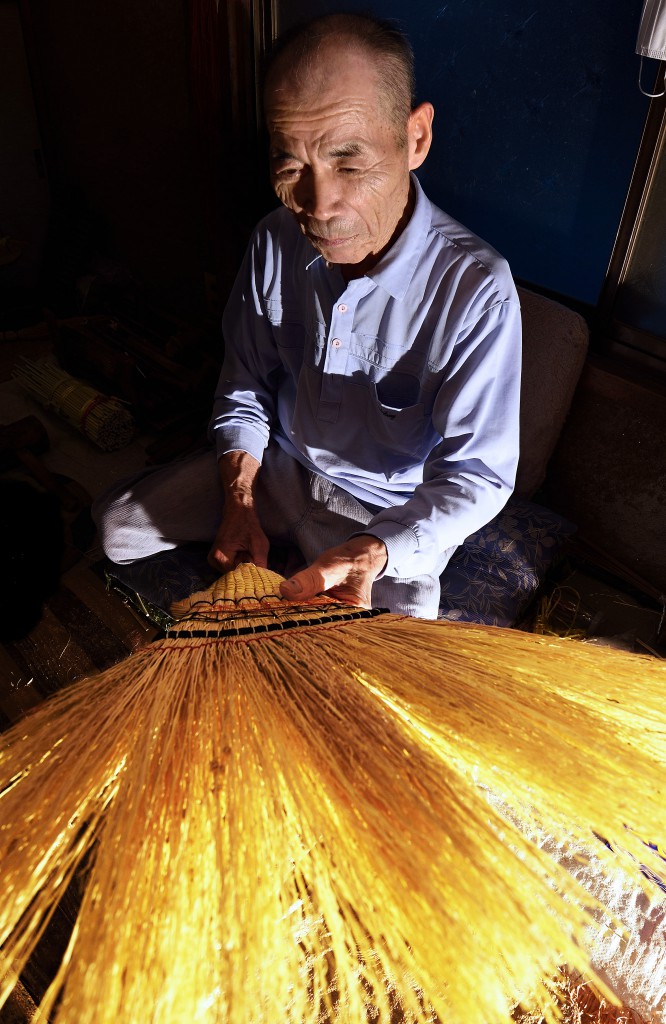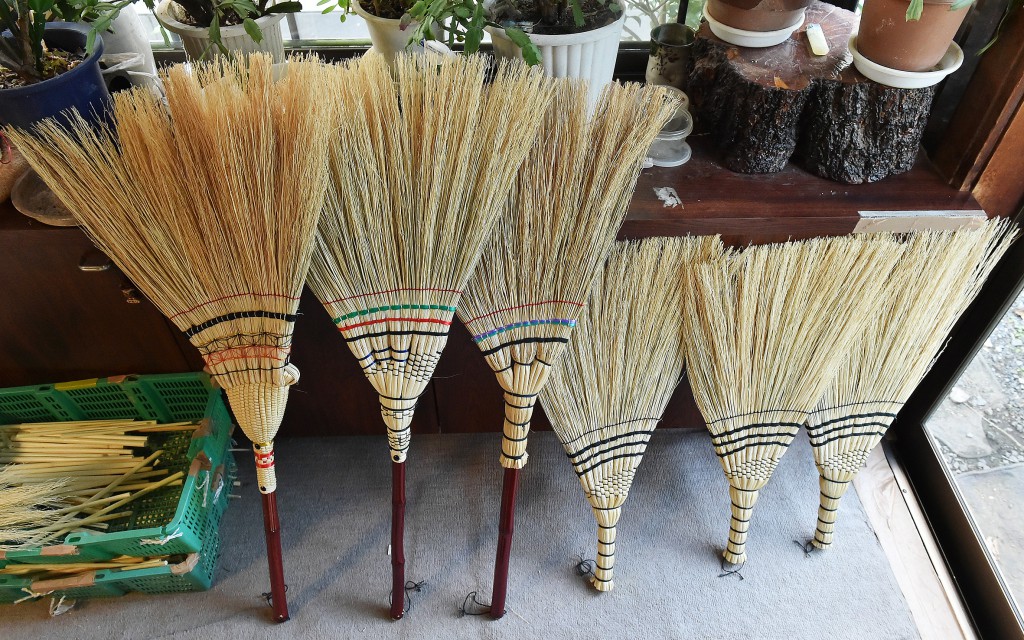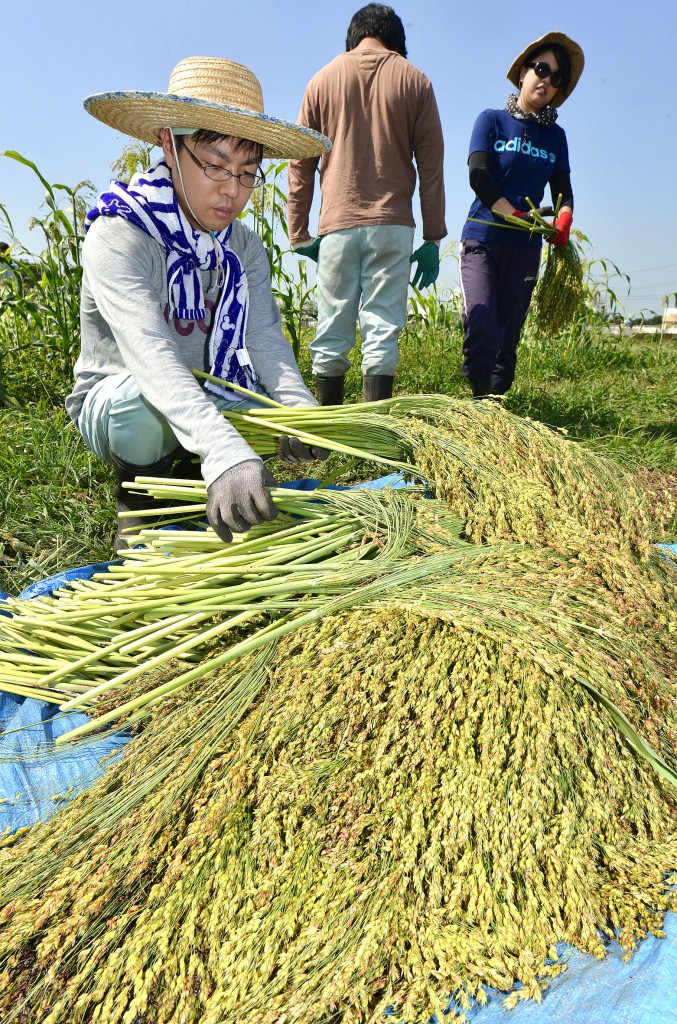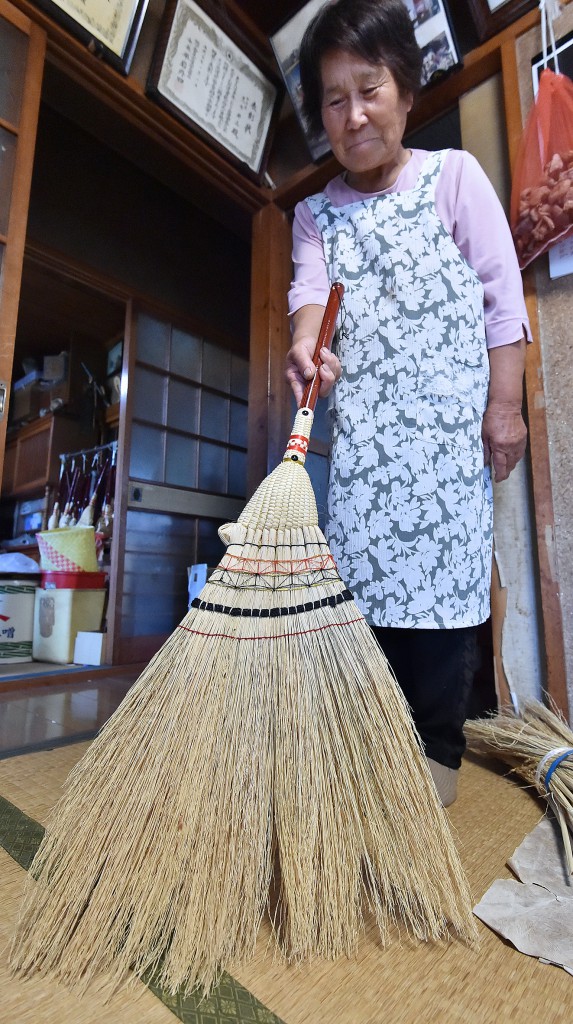Kotaro Yamada
– Zashiki brooms (Tochigi Prefecture) –
Zashiki brooms are one of the specialties of Tochigi Prefecture that can date back to the Edo period. To carry on the tradition for future generations and help old hands to make brooms using locally-harvested broom corn, a group of Utsunomiya University students are now trying hard to grow broom corn plants in Kanuma-shi, Tochigi Prefecture.
◇ ◇
“It turned out better than we expected,” said Yoshiaki Tsukui, 21, a senior student in agriculture and a member of the broom corn resurgence project in Kanuma-shi, Tochigi Prefecture while harvesting the plant at a quick pace.
The project started in April 2013 voluntarily by 13 students who were interested in the making of zashiki brooms, which was a popular side job for local farmers in the old days. The members came to the field every week, and finally, they are here to harvest the plants.
After the harvest, seeds are removed from stems using a threshing machine. Then the stems are put in hot water and dried in the sun for approximately 3 days. The dried stems are handed to Tokizo and Toku Araki, 83 and 85, veteran broom makers who live in Tsuga-machi, Tochigi-shi, Tochigi Prefecture. The student said while wiping sweat from his face, “It’s our dream to cast a spotlight on this great local tradition again.”
The whole area from Kanuma-shi to Tsuga-machi in Tochigi-shi was once known as one of the main broom producers in Japan. Many farmers here used to make brooms in agricultural off-season. But the brooms gave way to vacuum cleaners and everybody stopped cultivating the broom corn. In Tsuga-machi only, there used to be 120 bloom makers. Mr. and Mrs. Araki are actually the last broom makers left in the region who currently depend on materials supplied from Indonesia. But things will be a little different this year as the artisans have 2,500 dried stems supplied by the students. They can make brooms using the domestically-grown materials. Tokizo happily said, “I’m so glad that we have young people who care about the brooms we make. I’ll keep producing them so far as health permits.”

(Sept. 21, 2014)









